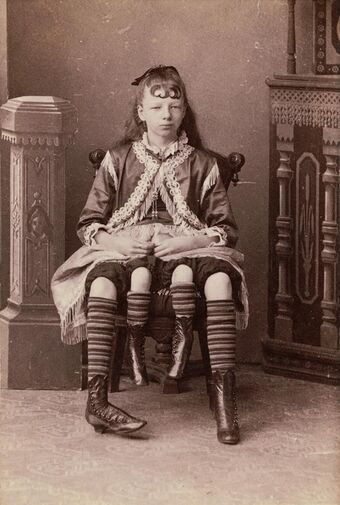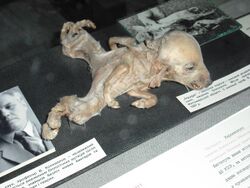Medicine:Dipygus
From HandWiki
| Dipygus | |
|---|---|
 | |
| Myrtle Corbin, a famous dipygus. | |
| Symptoms | Body axis forks left and right partway along the torso with the posterior end (pelvis and legs) duplicated |
Dipygus is a severe congenital deformity where the body axis forks left and right partway along the torso with the posterior end (pelvis and legs) duplicated.
Myrtle Corbin[1] was a dipygus; she married and had five children. In human cases, the inner two of the four hindquarters develop much smaller than normal. This is a type of "teras catadidymum" ("monster twinned below"). Another sort of deformity with extra legs can happen from a degenerated conjoined twin, as may have happened with Frank Lentini with his third leg.
Signs
Dipygus manifests as duplicated lower limbs and could include additional organs or bodily structures.
Causes
Dipygus is caused by genetic, environmental, or teratogenic factors. It occurs early in intrauterine life.
References
- ↑ Bosiljevac, Sasha (10 May 2007). "MYRTLE CORBIN – THE FOUR-LEGGED WOMAN". J TITHONUS PEDNAUD. http://www.thehumanmarvels.com/myrtle-corbin-the-four-legged-woman/. Retrieved 1 January 2016.


